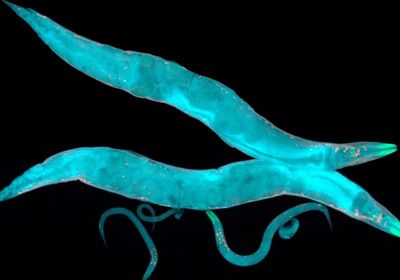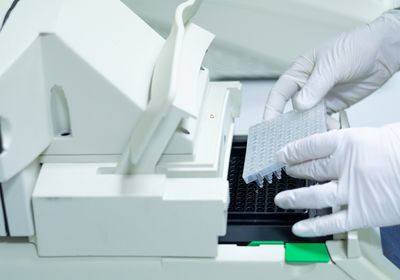ABOVE: iStock
Everyone knows about the importance of a good night’s sleep. Researchers have also shown the harmful effects of prolonged sleep deprivation on human health.1 Because the primary indicator of sleep is a loss of consciousness, and many of the ill effects from the lack of sleep associate with the brain, sleep researchers have naturally focused on neurons for sleep regulation studies.2
Now, a new study published in Cell Reports has turned sleep research on its head. Researchers from the University of Tokyo and University of Tsukuba reported three key genes that are critical for regulating sleep—not in the brain, but in peripheral tissues.3 The findings demonstrate that sleep is all about protein homeostasis: endoplasmic reticulum (ER) stress and downregulation of protein biosynthesis in peripheral tissues trigger pathways that induce sleep.
“For a long time, researchers have focused on studying sleep in the brain, but we found that the peripheral tissues are really requesting the brain to sleep,” said Yu Hayashi, a neuroscientist at the University of Tokyo and coauthor of the study. Given that prolonged wakefulness results in longer and deeper sleep, Hayashi hypothesized that there must be sleep-promoting substances that accumulate in the body during the time organisms are awake.
To test their hypothesis, Hayashi’s team chose an easy-to-handle model organism with known developmentally-timed sleep patterns: Caenorhabditis elegans.4 Taizo Kawano, a sleep researcher at the University of Tsukuba and coauthor of the study, created hundreds of random mutations and observed how it affected the worms’ sleep. Kawano found that mutations in three genes made the worms sleep significantly longer than usual.
Two of the mutations that Kawano and the team identified were in sel-1 and sel-11, which are involved in the degradation of misfolded proteins in the ER. Mutated worms showed protein accumulation via the unfolded protein response (UPR) pathway and subsequent ER stress.5
The team also identified a third gene that affected worm sleep patterns, methionyl-tRNA synthetase (mars-1), which is critical for the translational initiation and elongation steps of protein biosynthesis. The team observed that in the mars-1 mutants, global translation was inhibited, leading to increased sleep in worms.
Since sleep loss causes ER stress6 and impairs protein synthesis,7 Kawano and his colleagues believe that organisms cope with ER stress in peripheral tissues by signaling to the brain that sleep is required.
The team next used tissue-specific promoters to rescue expression of these genes in different parts of the body and found that expression in the epidermis of the worms restored a normal sleep phenotype. With these results, the researchers confirmed, for the first time, that these three genes are involved in the regulation of sleep and they function specifically in peripheral tissues, with neuronal signaling occurring downstream of these pathways.
Amita Sehgal, a neuroscientist at the University of Pennsylvania who was not involved in the study, was impressed with the team’s methods. “The authors of this study took an unbiased approach. They didn’t go in with any preconceived notions of what is required for sleep. With forward genetic screens, you let the animals tell you what’s important for sleep,” she commented.
Lastly, the team performed experiments in mice to confirm that the same function is conserved in mammals. Both pharmacological and genetic inhibition of these same genes and pathways increased sleep duration in mice.
Hayashi hopes that the study will prompt a new era of sleep investigation in which the body rather than the brain is the main focus. Sehgal concluded that it’s an exciting time to be working in sleep research. “Sleep is still the black box of biology; it’s something we spend a third of our lives doing, but we still have very little understanding of it. This study shows that sleep research is converging on specific pathways, including UPR, that likely represent fundamental underpinnings of sleep regulation,” she said.
References
- Itani O, et al. Short sleep duration and health outcomes: a systematic review, meta-analysis, and meta-regression. Sleep Med. 2017;32:246-256.
- Hobson JA. Sleep is of the brain, by the brain and for the brain. Nature. 2005;437(7063):1254-1256.
- Kawano T, et al. ER proteostasis regulators cell-non-autonomously control sleep. Cell Rep. 2023;42(3):112267.
- Trojanowski NF, Raizen DM. Call it Worm Sleep. Trends Neurosci. 2016;39(2):54-62.
- Read A, Schröder M. The unfolded protein response: An overview. Biology. 2021;10(5):1-10.
- Williams JA, Naidoo N. Sleep and cellular stress. Curr Opin Physiol. 2020;15:104-110.
- Tudor JC, et al. Sleep deprivation impairs memory by attenuating mTORC1-dependent protein synthesis. Sci Signal. 2016;9(425):ra41-ra41.






